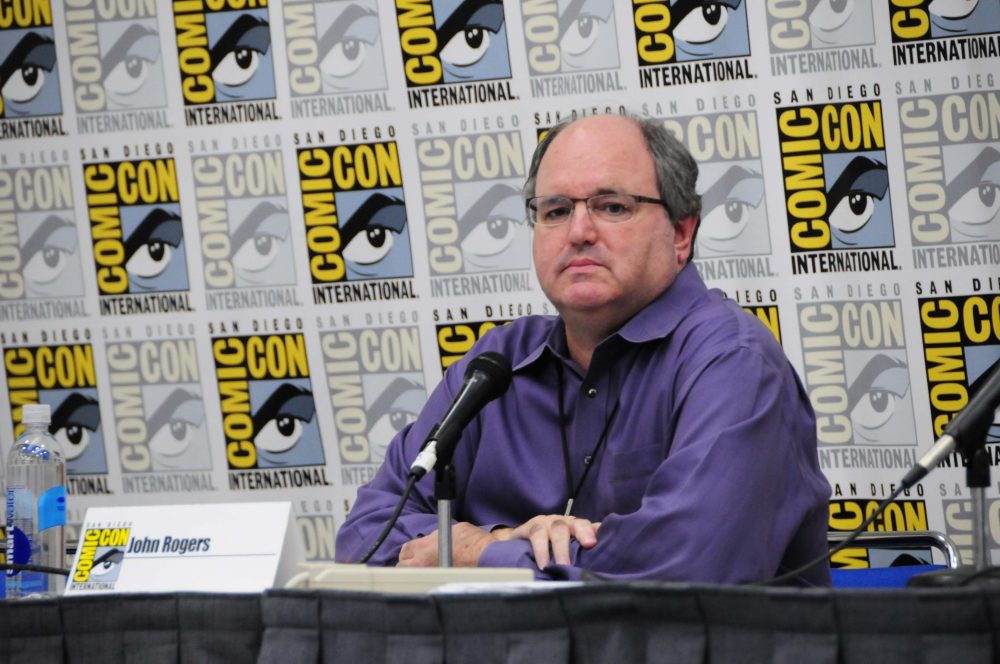
By: Nicholas Eskey
As per every year, almost like tradition, one of the last panels of the day for San Diego Comic-Con is the Talk Back Panel. And always seated front and center is the president of Comic-Con International, John Rogers. The importance of this panel is that it is the chance for attendees, exhibitors and volunteers to voice their concerns, suggestions, or even praises regarding the convention.
Also in traditional fashion, John Rogers introduced the panel, and thanked the attendees who attended, the exhibitors, the volunteers, and the security staff. This year though he added that this was the 25th anniversary of Comic-Con inhabiting the San Diego Convention center. “Which makes [San Diego Comic-Con] 125 days old. Which if you think about it, it doesn’t seem like long at all.” He also asked that if everyone could limit their questions to 1 per person as to facilitate the panel ending on time. This is in reference to last year, which ran to 2 hours.
In years past, the main concerns of the convention attendees have been consistently 3 things: Security, ADA services, and Hall H. Safe to say, they were all mentioned this year as well.
Before we talk about those issues, we’ll discuss first the other ones brought up. One attendee had a complaint with the hotel buses and their drop off and pickup areas. Where they currently stop, it impedes the pedestrian traffic along the two lane side road directly in front of the convention entrances. Instead of this, it was suggested that CCI talk to the city and see if the buses can drop off on Harbor Blvd.
“We actually looked at that,” said Rogers. “The sidewalk on Harbor isn’t wide enough to accept the influx of people from the buses. We would also need a second lane closed for the buses that have to leave/pass by.”
New this year, many of the SDCC badges were pre-sent to convention attendees. For those that didn’t receive it, including all of international attendees (save for Canadians), they had to pick them up on site as per usual. It came up that there wasn’t enough information on where these pick up areas would be. It’s notable to mention that the local Hilton, Marriott, and Hyatt hotels all shared in housing the registration for the convention this year. It was said at the panel that there was confusion where to get lanyards and bags. Another comment was made why most international attendees didn’t get their badges in the mail.
“We talked about that, with the reliability of most other countries’ mail system. Some are more reliable than others,” pointed out the CCI president. “While you were traveling here, it would be possible that your badge would still be traveling to you. In the end we opted for just United States and Canada.”
On the subject of badges, an attendee pointed out that the packing that his was sent in was very plain. “I get a lot of junk mail, and it looked very similar to all the rest. The only reason why I didn’t throw it out without a second thought was that it seemed thicker than the rest. Can we have a clearer indicator that it’s from Comic-Con?”
John Rogers was very quick to answer. “It’s so your neighbors can’t go, ‘Oh! That’s a Comic-Con badge! I’ll just take that.’” Everyone chuckled, including Rogers himself. “That’s why we also let you know in the email to be expecting it in your mail, so you don’t do something like throw it out.”
This year, for the first time at San Diego Comic-Con, RFID badges were used for all attending the convention. This was a move to prevent people from passing their badges to waiting friends outside, thus increasing the people already inside. They experimented with it at this last Wondercon in Los Angeles, and “learned a lot” from what the president of CCI said. In my opinion the RFID badges were seamless process, and even a few people commented that it went well. CCI had hired a company that was used to the system, having helped music venues with something similar. I think we’ll be seeing them make a return from here on in.
If you were one of many that was looking for convention WIFI, you might have noticed it was missing this year. “The company raised their prices $40,000… And nobody was willing to flip that bill,” said John Rogers. An attendee mentioned that there were some AT&T WIFI hotspots set up around the convention center, which the president said he wasn’t aware of, nor was it a part of SDCC’s doing.
It was repeated a number of times how people would see others posting online that they had won in the hotel lottery, but didn’t have Comic-Con badges. This led to repeated askings by attendees if the hotels around the convention could be ONLY reserved to attendees.
“Unfortunately we have professionals that register late, after the hotel lottery,” said Rogers.” If we did this, then they wouldn’t be able to attend.” The consensus from the audience at the panel was, “So what?”
On to the major issues: Many people might have noticed that the ADA attendance has grown larger with each consecutive year. And it’s true. One deaf attendee pointed out that ADA has tripled, but the allotted seating has remained the same. Another point was the rushing crowds when the convention doors opened, that it posed as a safety hazard for those who were capable of walking but not maneuvering. Also, for those in the ADA lines, they also felt that taking the trips in the elevator were too slow, taking away from those who were entering normally and thus filling the autograph and exclusives lines.
Hall H this year didn’t see much of a Hollywood presence like it has over the last few years. On a couple days, people were able to just walk in. However, the days that lines did form, some complaints came from people on what was the use of getting an “A tagged” wristband if it didn’t mean they would be guaranteed to enter first.
“The A wristbands are an indicator that you get to go home first and sleep more,” responded the president.”
A number of people has complained about those who would get into Hall H early, and just stay there until the programming they wanted. Numerous people asked if the hall could be cleared out after each showing.
“If we had to clear the hall out after every program, this would add more time to the process and cut the programming allowed in half. I’m sure no one wants that.”
To that, it was suggested that maybe the hall should be cleared after every third program. That didn’t sound too appealing to the room.
ADA also is a big discussion for Hall H every year. An attendee said that there was a “mix up,” and the 4th line was allowed in before the 1st line, which prevented many who’d waited hours more from entering. John Rogers apologized to this, saying he would look into it.
For comfortable accommodations for those of ADA waiting for Hall H, John Rogers pointed out that canopies could not be placed against the convention walls as per the fire regulations. Also, grass areas weren’t supplied to them because many ADA attendees had informed staff in years past that they have a hard time maneuvering on it.
Lastly, on the topic of security, this has usually been the most discussed one. This year though, a number of people had remarked that they felt security was quite friendly and helpful. Some of course did say that they met with unfriendly and unhelpful individuals, but the majority seemed to hold with the positive. The convention has some more work still to go with their security issues, but on the whole it seems to be getting steadily better. My only negative experiences this year with security were a few that were raising their voices. Not at myself, but with others nearby I observed.
The talk back went fairly well this year I felt, only going over 15 minutes as opposed to last year’s hour. If there’s anything to be taken away from this year’s panel, it’s that organizers are trying to do what they can to make a successful convention, and definitely have their work cut out for them.


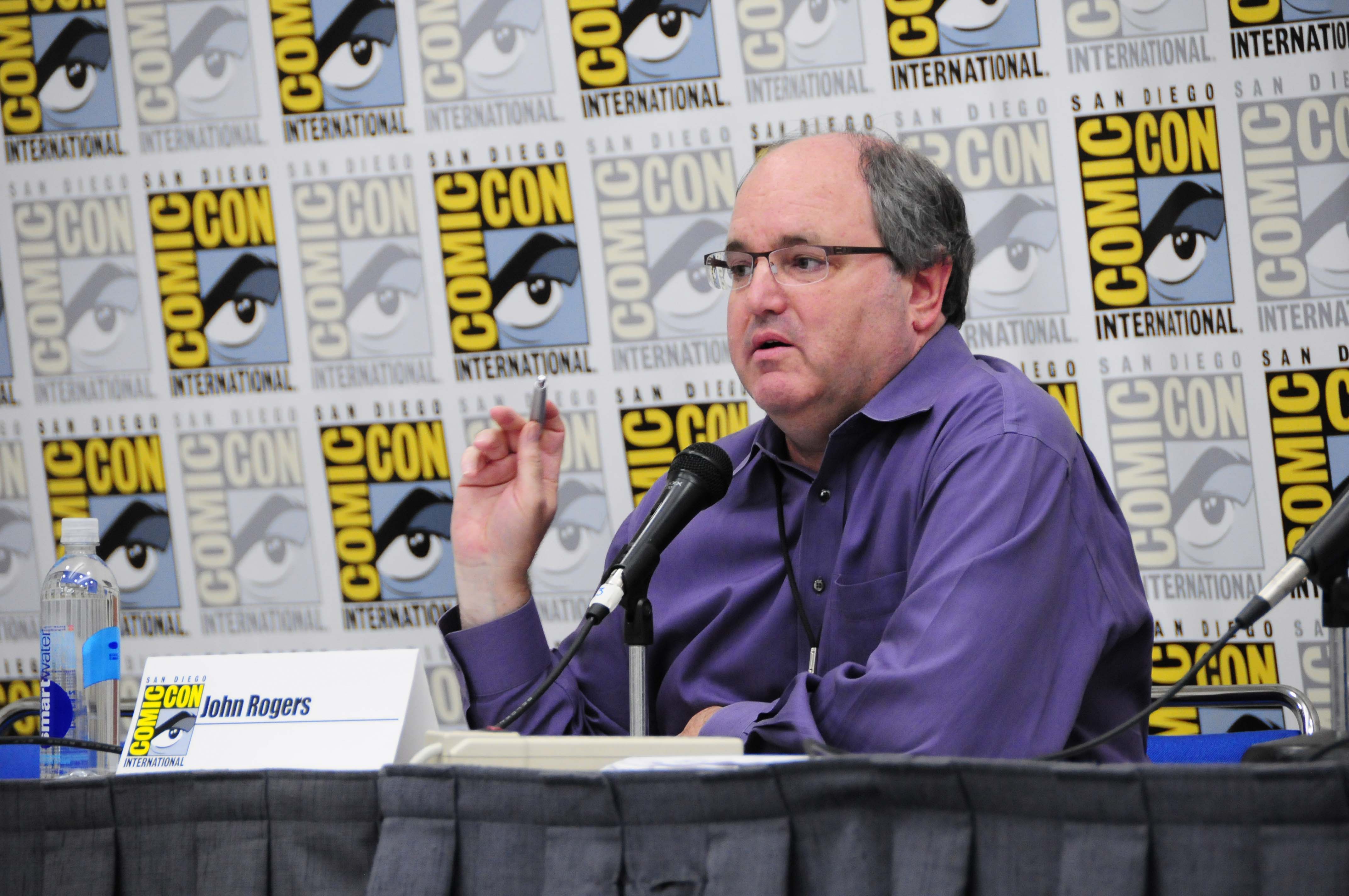
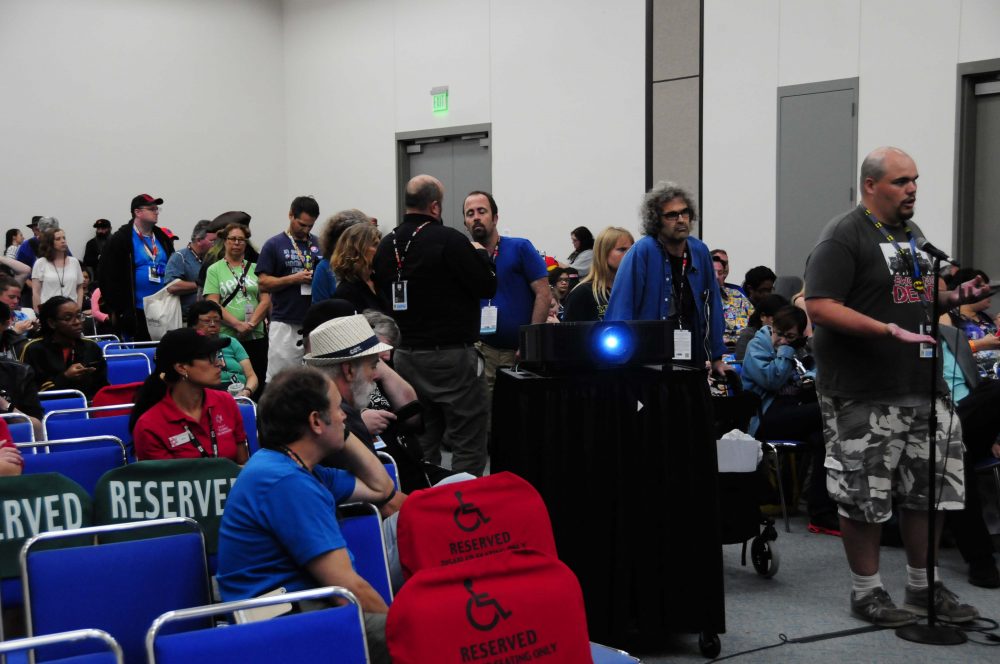
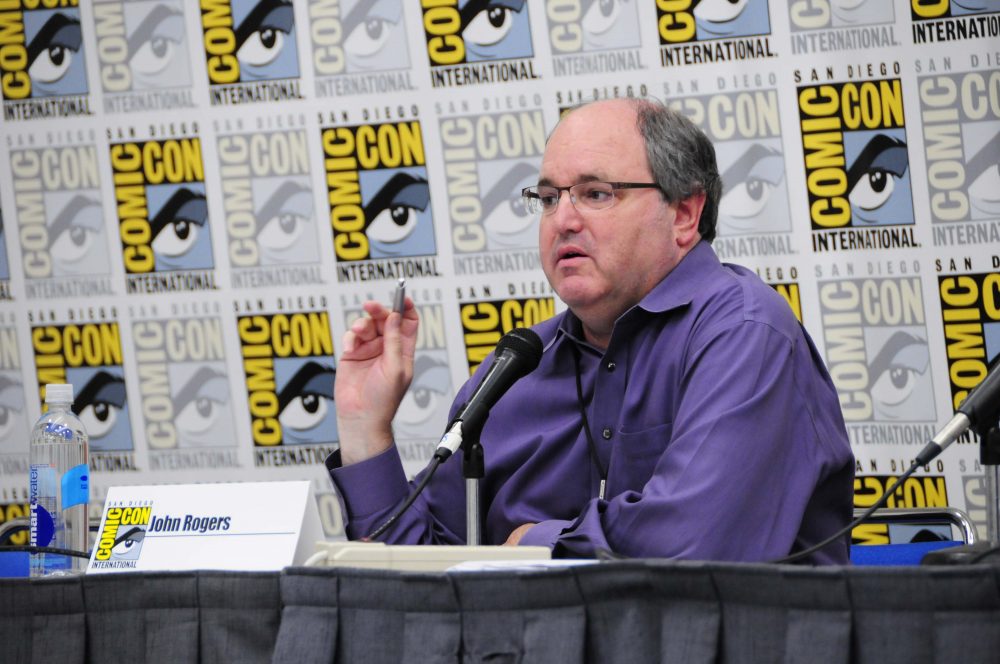
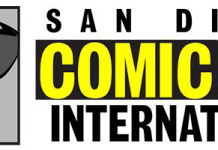


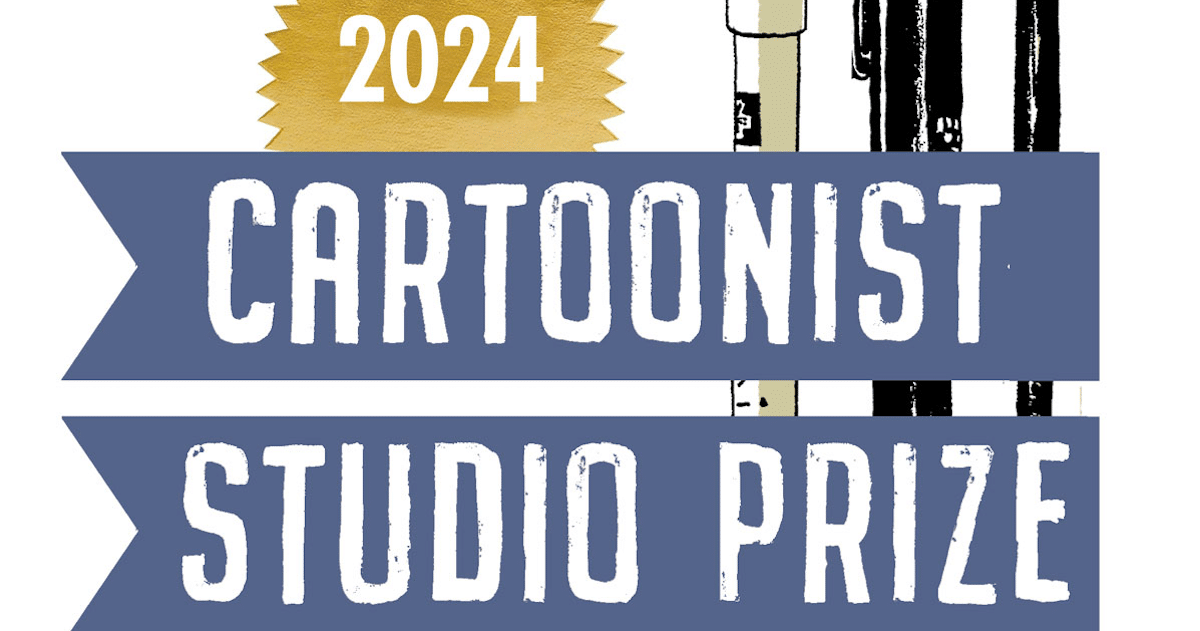


I found wi-fi in the lobby. It was on a network called “Free Internet” and was provided by the convention center. It didn’t work inside the exhibit hall or on the second floor though.
Disney and Star Wars proved that Hall H can be cleared in a timely and orderly manner.
Since Hall H is segregated from the rest of the exhibit floor, why not schedule events earlier and later in the day? 8 AM to Midnight?
Add a 15 minute “intermission” in-between for lost-and-found, to check the wristbands of attendees for the next event, and to move ADA attendees in with less fuss..
Yes: WRISTBANDS. Other shows make it work. Hand them out starting at 6 AM. Yes, people are still waiting in line, but that line disperses once the wristbands are exhausted.
Or you allow attendees to register online, once the schedule goes live, since CCI already has their info, and can link it to the RFID badge.
You log in like hotelween. You get one selection, then get sent to the back of the queue if you have other days available. Like Disney’s FastPass system…
Once the previous event has shut the doors, the line for the next event is formed, with people scanning their RFID tags for confirmation. Judging by no-shows for previous events, a small stand-by line can be organized. Those people are allowed in ten minutes after the start of the presentation.
Since CCI has the RFID tags linked to the events, each event can then send out exclusive online swag to the attendees, so that attendees don’t feel slighted when trailers, etc. appear online. (Does Hall H still hand out exclusive swag, like CDs and posters? That’s another incentive to clear the room…)
https://www.comic-con.org/toucan/23-toucan-tracker-wristbands-hall-h-2016
Torsten:
You’ve got some cool ideas about the opportunities afforded by RFID technology, and I wouldn’t be surprised at all to see a show try them out at some point, but to some of your other comments:
Hall H programming *already* incorporates into its schedule a 15 minute break between programs. If the show runners (plausibly) deem that insufficient for general hall clearance after all panels, it’s likely any real effort to clear the hall every time would require more time with consequent impact to the schedule. That said, your suggestion of running programming through more of the day might help accommodate the needed extra time, provided there are no insurmountable issues with the facility.
As Jackie Estrada’s link points out, wristbands are already distributed for Hall H, starting the night before each day rather than the 6 AM day-of you’re suggesting, so I don’t see how your schedule improves the current state.
Also, note that Hall H is festival seating, not assigned, so folks will and still queue to be best positioned for desirable seating. Current policy does cover wristband recipients who want to leave the line and return, but it is unrealistic to expect people to automatically disperse upon receiving a wristband–unless they move to assigned seating, which I don’t think anyone has seriously suggested.
But, yes, the RFID technology definitely suggests some interesting applications that might make for a better attendee experience..
As a disabled person and comic fan of thirty years. I’m getting tired of CCI managing to blame us every year.. It is impossible to get an accessible hotel room for this convention. I know it’s hard for everybody but ADA should be at least be covered on the hotels website.
Comments are closed.